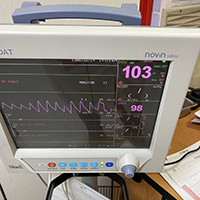Clinical guidelines for traumatic brain injuries in children and boys

Accepted: 30 October 2019
HTML: 16
All claims expressed in this article are solely those of the authors and do not necessarily represent those of their affiliated organizations, or those of the publisher, the editors and the reviewers. Any product that may be evaluated in this article or claim that may be made by its manufacturer is not guaranteed or endorsed by the publisher.
Authors
The main aim of management of pediatric traumatic brain injury (TBI) is to hold normal ranges for optimizing the most proper outcomes. However, for providing physiologic requirements of an injured brain it is very important to enhance the quality of recovery and minimize secondary injury. Within this study it is tried to regulate the most proper guidelines for management of pediatric TBI. A comprehensive research was conducted on some biomedical and pharmacological bibliographic database of life sciences such as PubMed, EMBASE, MEDLINE, LILACS database, global independent network of Cochrane, Science Direct and global health library of Global Index Medicus (GIM). By referencing these databases, a universal literature review was carried out through combining various recent studies in terms of pediatric traumatic brain injury, epidemiology, management and related clinical guidelines in accordance with various related articles published from 2000 to 2019 which could cover this area of recommendations.Based on the main objective of this study for providing a comprehensive review around available clinical practice guidelines for more precise management of TBI. These guidelines can be administered especially for pediatric population which possibly could improve the quality of clinical practice guidelines for TBI. The guidelines of TBI could be applied worldwide in various traditional demographic and geographic boundaries which could affect pediatric populations in various ranges of ages. Accordingly, advances in civil foundation and reforms of explicit health policy could decrease the pediatric TBI socioeconomic burdens.
How to Cite
PAGEPress has chosen to apply the Creative Commons Attribution NonCommercial 4.0 International License (CC BY-NC 4.0) to all manuscripts to be published.
Similar Articles
- Mahyar Mohammadifard, Kazem Ghaemi, Hamed Hanif, Gholamreza Sharifzadeh, Marzieh Haghparast, Marshall and Rotterdam Computed Tomography scores in predicting early deaths after brain trauma , European Journal of Translational Myology: Vol. 28 No. 3 (2018)
- Nicola Manocchio, Isabella Iovene, Antonio Santoro, Maria Chiara Maccarone, Calogero Foti, Report and Abstracts of the 15th Congress of the Mediterranean Forum of Physical and Rehabilitation Medicine: Rome, July 6-8, 2023 , European Journal of Translational Myology: Vol. 33 No. 4 (2023)
You may also start an advanced similarity search for this article.

 https://doi.org/10.4081/ejtm.2019.8613
https://doi.org/10.4081/ejtm.2019.8613



